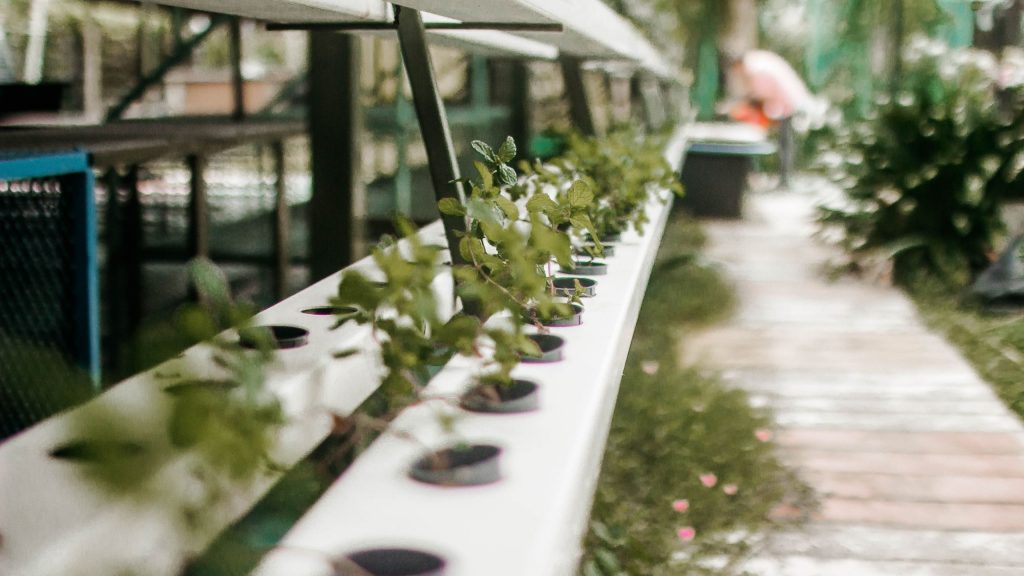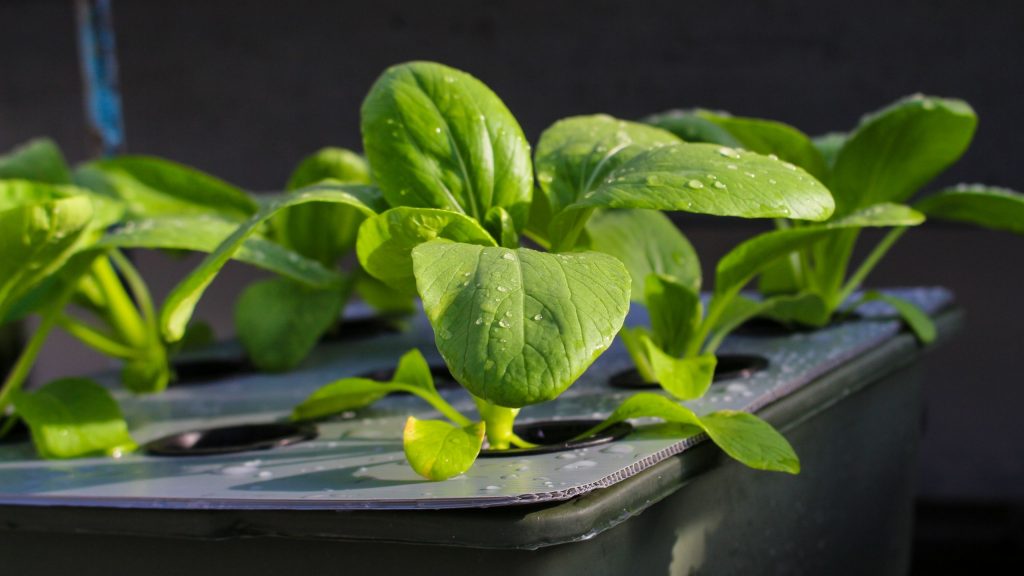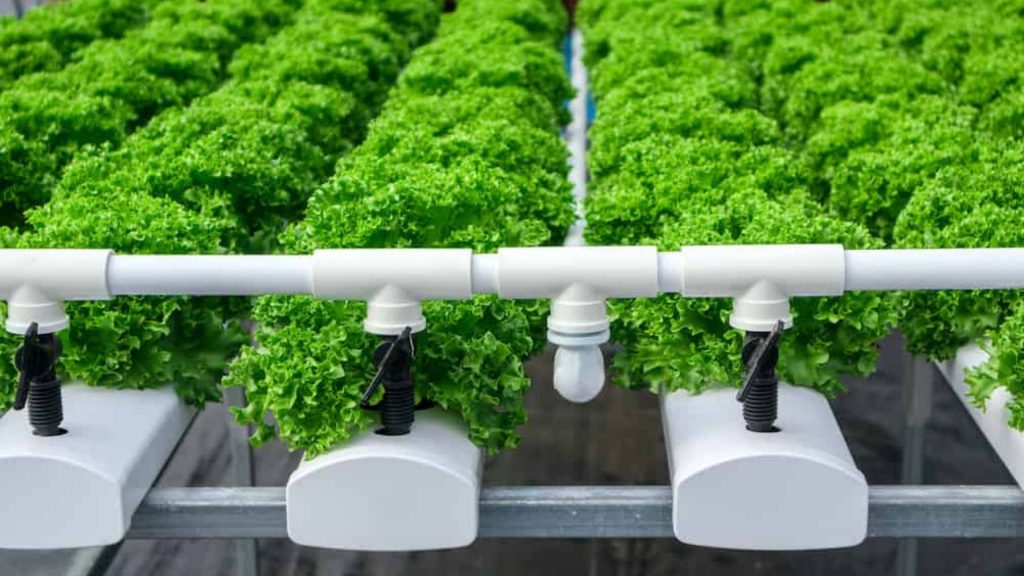Growing Indoor Plants with Hydroponics
Table of Contents
In 1699 John Woodward, an Englishman, discovered growing indoor plants with hydroponics when he experimented with growing plants in water without soil. In 1937 William Gericke expanded on this idea when he grew tomatoes on a vine in his backyard in a nutrient-rich water solution. However, hydroponics goes back even further than that. For instance, the hanging gardens of Babylon in the ancient world are believed to have been grown using hydroponic gardens.
What Does Growing Indoor Plants with Hydroponics Mean?

Hydroponics is when plants grow in nutrient-rich water rather than soil. The Latin meaning of hydroponics is working water. The water provides oxygen, nutrients, and hydration to the plants. Using a hydroponic garden instead of a soil garden will give you better quality plants. Continue reading for a complete guide on all the different ways for growing plants with hydroponics. Let’s begin by talking about the three most popular hydroponic systems.
Most Popular Systems for Growing Indoor Plants with Hydroponics

There are six different types of hydroponic systems. Wick, Deep Water, Culture, Ebb and Flow, Nutrient Film Technique, and Aeroponic. The three most popular hydroponic systems are Deep Water Culture, Wick, and Ebb and Flow. This section will highlight the most popular hydroponic systems.
Deep Water Culture

Deep water culture, or DWC, is a method for growing indoor plants with hydroponics that uses a container to hold a decent amount of water. More water means more nutrients for your plants, and more nutrients mean more free time for you. With deep water culture, the plant’s roots are submerged for almost twenty-four hours a day.
DWC is a very low-maintenance system. Using the deep water culture system for your hydroponic garden, plants will take half the time to grow compared to soil gardens. Deep water culture systems do not require many parts and are relatively simple to put together. The disadvantage of Deep Water Culture hydroponic systems is that it can be hard to maintain the water temperature if you are not using a circulating system.
Growing Indoor Plants with Hydroponics Using a Wicking System

Farmers used the wicking system for many years before hydroponics was even a thing. The wicking system is a straightforward one in that it requires no air pumps or water pumps. Smaller plants thrive in the wicking system because they use fewer nutrients and water. If you place large plants in the wicking system, they may not get enough nutrients or water. The reservoir is connected to a growing tray by wicks in the wicking system. The wicks use capillary action to bring the nutrients and water into the growing medium and the roots. Cotton rope is the most popular wick to use, but it is sensitive to mold. A con of using the Wick system in your hydroponic gardens is that plants like tomatoes will have a hard time growing in it. They work best with fast-growing vegetables like lettuce and kale.
Ebb and Flow

The ebb and flow system is a unique way to grow indoor plants with hydroponics. It does not expose plants to water the whole time, the way wicking systems and deep water culture systems do. Plants are placed in a grow tray along with a growing medium, and the tray is then occasionally flooded with nutrients and water. This process happens a few times a day.
The reservoir is below the tray and has a water pump and a timer. Ebb and flow are not as popular as the other two hydroponic systems because they use a lot of growing mediums, although the ebb and flow system is very customizable. The ebb and flow system can be sensitive to power outages, and that is not a problem when growing plants, the old-fashioned way in soil.
Benefits of Growing Indoor Plants with Hydroponics

There are many benefits to growing indoor plants with hydroponics. Some of these benefits include:
- Maximize space by using a hydroponic garden. Hydroponics mainly involves small rooted plants, and because the roots are so small, plants can be grown closer together. Hydroponic gardens take up at least ninety percent less space than soil gardens.
- With a hydroponic garden, you will be able to conserve more water. How can you possibly save water with a hydroponic garden? Easy! With a soil garden, you constantly have to water the plants. But, a lot of that water never even makes it to the root, and many will evaporate out of the soil and drip out of the container. A tiny percentage of the water you use for your plant is actually getting used.
- Hydroponic gardens can produce fantastic, healthy crops in ideal conditions. Crops grown in hydroponic gardens are of higher quality than crops grown from types of gardens.
- You will be able to garden year-round if you use a hydroponic garden. As long as you have easy access to water, you can grow your plants indoors in a hydroponic garden. That means you will have higher quality food year-round.
- You can save money on the soil by using a hydroponic garden. Soil is becoming scarcer every day, and due to erosion and compaction, the soil is disappearing. Without soil, it is challenging to grow the crops that many people rely on. Soil quality varies from place to place, and poorer quality soil can change the overall taste and look of your produce.
Best Plants to Grow in a Hydroponic Garden

Are you considering starting a hydroponic garden? If so, you probably have no idea what plants to put in it! This section describes the best plants to grow in a hydroponic garden:
- Lettuce and other green leafy vegetables grow very well in hydroponic gardens. They grow fast and are easy for beginners.
- Strawberries are the most popular fruit grown commercially in hydroponics and are commonly grown in vast scale hydroponic farms.
- Basil is a durable and resistant plant to grow in a hydroponic garden for beginners. It is an easy plant to grow and can produce in high quantities.
- Coleus is a tropical shrub that cannot tolerate any cold weather making it perfect for a hydroponic garden. You can grow this tropical plant even during the winter.
- Lily of the valley loves to be in the shade and adapts well to moisture.
- Bell peppers grow larger and better in a hydroponic garden. Since bell peppers rely on pollination to grow, they will require assistance from you, not usually a beginner plant.
- Spinach is a lush green vegetable that grows well in hydroponic gardens.
- Mint is easy to plant in hydroponics. They grow fast and abundantly.
- Cucumbers are an excellent moisture-loving plant that may need support since they grow on a vine.
- Chamomile is a moisture-loving plant as well and has excellent medicinal purposes.
- Radishes are some of the easiest vegetables to grow, and they grow well in both soil and hydroponics.
- Green beans are a very low-maintenance plant to grow in a hydroponic garden.
- Blueberries do best when grown in the Nutrient Film Technique system.
- Spider plants are known to grow better in hydroponics than in a soil garden. Spider plants love humidity, so; they will flourish in water-based systems.
- Pothos plants can live for years in the water. You can propagate this plant by using clippings from leaves since they are hardy and resilient.
Vegetables that are harder to grow in hydroponic gardens have deep roots like potatoes, turnips, and carrots. These plants do not yield as good of crops in hydroponics; they are better suited for soil gardens. If you have the space, though, you can grow deep-rooted plants in your hydroponic system; just have some patience, and practice makes perfect.
Growing Indoor Plants with Hydroponics – The Wrap-up
Hydroponic gardens are not only time-saving, but they are also efficient, cost-effective, and eco-friendly. When growing indoor plants with hydroponics in your home, you can choose from one of the three most popular hydroponic systems. After that, you will have to select the best plants to add. Leafy green vegetables like lettuce and spinach will grow best in hydroponic gardens. Hydroponics is a great, unique way to grow plants in your home all year round.
FAQ
Yes. Like everything else, hydroponics has both good and bad aspects. The disadvantage of having a hydroponic garden is, they are vulnerable to blackouts, waterborne diseases, and illnesses, and the process of setting up a hydroponic garden can be expensive.
The most common vegetable grown in hydroponics is any vegetable that is leafy and green. Spinach, kale, and lettuce are a few typically found growing in hydroponic gardens.
Yes. It is possible to overwater a plant in a hydroponic garden. The leading cause of overwatering in hydroponics is not using the system correctly.
The six hydroponic systems are Wick, Deep Water Culture, Ebb and Flow, Drip, Nutrient Film Technique, and Aeroponic.
You will probably have to change the water for a medium-sized hydroponic every three weeks. If you have a small hydroponic garden, you will have to change it before that.
Published at Wed, 23 Mar 2022 07:25:40 -0700